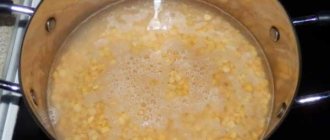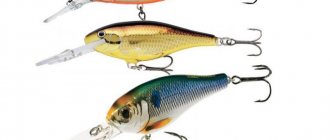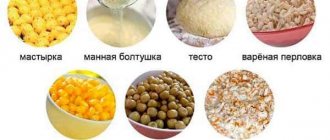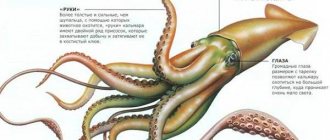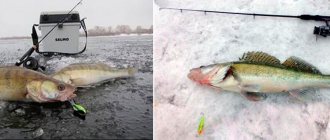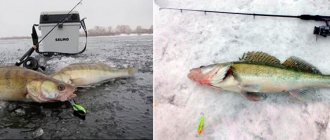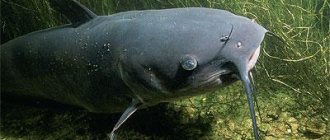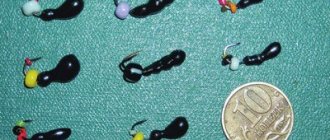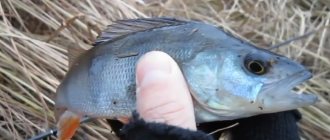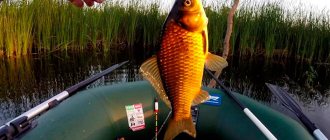Yuri 09.09.2020 1272
An angler who has experienced the happiness of fighting with a tireless and strong carp will again and again look for meetings with this worthy opponent. In the Volga delta, fishing for carp using a shell has long been popular among local Astrakhan fishermen. What kind of bait this is, what it looks like and why it is best suited as bait, we will tell you in detail in this article.
What is pearl barley?
Common pearl barley is a freshwater representative of bivalve mollusks that lives mainly in lakes and rivers with a sandy or pebble bottom. There are especially many of them near the shore of the reservoir. Muddy or rocky bottoms are also often a haven for these river mussels.
The body of the mollusk is protected by a bivalve convex shell of brown or yellow-green color. The doors are securely closed using a special toothed lock. Pearl barleys live up to fifteen years; the shell darkens with age. They reach 10 cm in length.
Pearl barley feeds on various organic substances found in water. It breeds in late summer – early autumn.
Pearl barley serves as food for many types of fish; it has a high calorie content and contains sufficient nutrients and protein. But getting to this delicacy is not at all easy for fish - access to the meat is only open if the shell is damaged. And it can break if it hits a stone or a boat.
Description and natural range, differences from toothless
Perlovitsa is a freshwater mollusk of the Unionidae family. It has an external resemblance to the toothless one, the first has a thin shell and is found in stagnant water, the second has teeth on the hinge ligament.
Shell structure: bivalve, thick, three-layered. The upper edge is slightly curved, the posterior edge is straight. The inner layer is like mother-of-pearl, white, blue. The height of the carapace is 23-40 mm, length – 72-90 mm, the shape is elongated, convex, smooth, shiny. The tops are wide and protruding. The color is yellow-green, brown, with longitudinal stripes, by which they recognize the age of Perlovitsa.
The shell has two openings, the first is wide, with many cilia. It is a supplier of food and oxygen. The other is narrow, called powder, excretory, to get rid of waste products.
The mollusk has a body with folds and a leg. On the dorsal part there is a growth where the internal organs are located. On the body there are cavities with fluid and with the heart and gonads.
The pearl barley is equipped with two muscles (locks), with the help of which the flaps are attracted to each other and slam shut tightly, protecting it from predators. They have no organs of vision or head, and their hearing is weak.
Photo gallery Perlowitz:
Breathing is through the gills; Perlowitz has two blades for this purpose on either side of the leg. In this case, water is sucked into the lower siphon, washes the gills and is thrown out through the upper (cloacal) siphon.
The shells move very slowly, they are more inclined to walk when the bright sun is shining. Speed – 1-1.5 m per hour. The rest of the time, individuals lead a sedentary lifestyle. Perlovitsa overwinter, burrowing into the silt in the fall, as if petrifying, keeping the shell valves tightly closed.
Habitat: freshwater rivers, lakes, ponds with sandy, muddy bottoms and slow currents. They live in the coastal or bottom parts of water bodies. They are found naturally in the Volga, Kama, Oka, and the Far East. They feed on plankton and detritus. Individuals are dioecious. Males release sperm into the water, which enter the female's mantle cavity, where fertilization occurs. They can live 15 years, but in an aquarium a maximum of 2 years.
Who is caught on pearl barley?
The main fan of river mussels is catfish. For him, pearl barley is, first of all, a familiar natural food. To catch barbel, 5-10 clams are put on a large hook. Catching a mustachioed giant with a siege or a quok is rarely complete without pearl barley as bait.
Another bottom dweller who is not averse to eating pearl barley meat is burbot. Large bream also loves the meat of river mollusks. Both burbot and bream can be caught using pearl barley with bottom tackle. Bream responds especially well to a sandwich of pearl barley and cockchafer.
Smaller fish such as perch, rudd, crucian carp and roach are also caught using pearl barley meat. But in this case, you need to plant pieces of the mollusk, and not the whole one. For tench, a combination of a shell with a worm or maggot is suitable. Gustera is not indifferent to a garland of several pieces of shellfish meat, mounted on a hook with a long shank.
When using a shellfish as bait, it is important to remember one simple, but at the same time important rule - you should fish for it where it lives. And the more of it there is in a reservoir, the greater the chances of a good catch.
In different water areas you need to work with this bait differently. So, in some places the same carp consistently bites on whole pearl barley, while in others it neglects it, but resolutely grabs pieces of shellfish meat.
Fishing with a shell
Fishing with a shell. The old, “grandfather’s” method, which all fishermen have heard about, but few people put it into practice. Always bites.
They say that you can look at fire, water and how another person works for an infinitely long time. In my opinion, you can also watch another person catching fish for an infinitely long time.
Many fishermen will object to me. Like, why watch, you need to fish! I thought so too, and when I was getting ready to meet Andrei Afanasyev, I naturally took a fishing rod with me. I wanted to get a master class and apply new knowledge in practice. But after carefully observing how the master worked, I realized that it was too early for me. This is a very difficult task - fishing with a snail. But first things first…
The small river Vydritsa, flowing along the border of the Svetlogorsk and Zhlobin districts of the Gomel region, flows into the old river Osinka, which is connected to the Berezina. Here, on the left bank of the mother river, we met Andrei Afanasyev. To get here, he used an inflatable boat; Pavel, the operator, and I were taken on a motorboat by an employee of the OSVOD station.
Of course, our meeting was not an accident. We agreed in advance with Andrey, and at the appointed hour he met us fully armed. With smooth, even movements, he cast the tackle, made a measured retrieve, and hooked. It would seem that what is so difficult here? But such an idyll was preceded by serious preparation. We will go through all its stages.
Let's start with the most difficult thing - finding and obtaining bait. To do this, you need to go into the water, on the shallows with a weak current. You need a net with a strong rim and a fine mesh.
A decent sized pile of aquatic life had formed on the shore. These are mainly livebearers, or meadows - rather large freshwater gastropods. Their distinctive feature is the cap, which, when removed from the water or disturbed, closes the entrance to the shell. People call this creature a shell or a snail. And they catch her. To do this, you need to split each one and separate the solid body from the pulp. The last one is for bait, the rest is for feeding.
The preparation for fishing is not over yet. You need to choose the right place for a comfortable and effective process. Since Andrey fishes here all the time, he confidently headed towards one section of the coast. Here, within reach of the wiring, there is a fairly deep, about three meters, section of flat bottom between two snags. To attract fish here, the place needs to be fed. For this, a previously prepared mass from crushed shells was needed. Having mixed it with sand, Andrey, in my opinion, quite generously “set the table.” However, the volume of complementary food can be several times greater if there is a possibility of large fish approaching.
After all the manipulations, Andrey finally started fishing. At first glance, simple movements, in fact, are a process acquired through experience, worked out and verified down to the millimeter. The bait should pass exactly along the bait path, as evenly as possible, without snagging. To do this, you need to throw the tackle at one point and, after a few seconds of swimming, take it out for the next cast. The entire cycle is repeated over several hours, so the rod should be as light as possible. Andrey has a carbon fiber “four” with a miniature coil. The main line is quite thick - 0.27 mm, the leader - 0.16 mm. This is in case the trophy bites. Andrey does not use a landing net as a matter of principle, giving the fish more chances. The float uses a weight of 6 to 10 grams; the sinker must have time to penetrate the water column very quickly. The hook, by modern standards, is simply huge - a “ten” with a long shank. This choice is explained by the need to frequently and quickly pick out the lawn meat from the remains of the shell.
After one or two wires, the hook turns out to be empty - the snail shell bait is too delicate. This is probably why the fish loves it. A little later we saw this with our own eyes.
Gradually the bite intensified. As the hero of our story expected, the large fish did not respond to the treat. The day before there was a change in the weather, it got colder, and a strong wind rose. But small and medium-sized fish happily chased the tempting lumps attached to the hook. There was only one silver bream, a tasty fatty fish, the desired catch of many fishermen.
Two hours passed. This time was enough to make sure that snail fishing is quite effective. Despite the modest catch (at least 2 kg!), Andrey was satisfied.
There's no such thing as bad fishing, he said.
This is how it is, simple at first glance snail fishing. The old, “grandfather’s” method, which all fishermen have heard about, but few people put it into practice. No tail, no scales for everyone!
Extraction of pearl barley
It’s not difficult to prepare plenty of pearl barley. The most promising place is a section of the river behind a sand spit. Such places with a slow current abound in all kinds of shellfish. To get the pearl barley, you need to run the net along the bottom several times. As a result, the landing net will be filled with shells.
Another traditional way of catching shellfish is to walk along the bottom and feel for them with your feet. By mid-summer, the shells burrow a little into the ground, but not completely, so there are no problems with groping.
How to catch fish with a barley shell
Pearl barley, or shells, is one of the varieties of freshwater bivalve mollusks that lives off the shores of reservoirs with a sandy or rocky bottom. These shells are rich in protein, contain a huge amount of nutrients and are attractive to almost all river fish, including catfish, roach and silver bream.
Preparation and storage of pearl barley Shellfish are harvested on river shallows - usually behind a sandbar, in areas with slow currents. To collect pearl shells from the bottom, you can run a net over it several times, or simply wander along the bottom of the river barefoot, feeling the shells with your feet and then catching them.
Shells can be used immediately or kept in reserve for the next fishing trip. It is best to store pearl barley in a bag made of mesh. Mollusks placed in it and lowered into a pond will live for about two weeks.
It’s even easier to collect water from the river in which the shells were collected into a bucket and drop the catch there. However, in the second case, it will be possible to keep pearl barley alive for no longer than seven days.
If you don’t have a net or a bucket at hand, you can put the shells in damp grass, tightly wrapping them with fresh seaweed. True, you will have to use them within a day at most.
Shell bait The easiest way to make pearl pearl bait is to crush the latter into small pieces, put it in a net with small cells and tie it in a tight knot. Having found an area on the reservoir suitable for line fishing, this unit is lowered near the boat, they wait a little and begin fishing.
See also: Spinning fishing in winter: freezing of the cord and spinning rings
You can lure fish with pearl barley all year round, but this method is most effective in the second half of summer, when caviar forms inside the shells - a real delicacy for tench, bream, roach and silver bream. It is advisable to use bait when catching catfish on a donk.
Pearl barley bait Inside each shell there is tender light yellow meat - it can be cut into small pieces and used as bait when fishing.
To get clam meat, you need to trim the holding muscles located on the sides of the shell, and then cut out its contents with a knife. The hardest part is used for hooking, while the soft remains are added to the bait.
To catch small fish like silver bream or roach, small pieces of pearl barley are put on hooks; to hunt catfish, the whole mollusk is taken.
To prevent the bait from slipping, you can pour boiling water over it before using it - in this case, the meat will become more elastic. It is also good to place shells on double or triple hooks, pressing the pieces tightly together.
A huge advantage of pearl barley bait is that it does not require frequent replacement, remaining attractive throughout the entire fishing trip.
Source
Storage methods
The optimal way to store pearl barley is in a mesh bag, which is placed in a pond. In this way, you can keep shellfish alive for 10-14 days.
An alternative is to store the pearl barley in a bucket of water. Water must be taken from the reservoir in which the shellfish were caught. Mollusks will live in a bucket for no more than a week.
In the absence of a bucket and a net, river mussels can be stored in damp grass. It is important to cover them with fresh seaweed. In such conditions they are stored for about a day.
Habitats, structure and lifestyle
The cucumber lives in fresh water bodies on a muddy river bottom, usually near the shore, and you can also find pearl barley in a stagnant pond. The river cucumber chooses rivers with weak currents, so it is easier for it to move. The shell is in the form of an ellipse, in appearance it resembles a large egg.
There are growth rings on the shell of the shell. The height of the shell is from 2.5 to 4 centimeters. Length from 9 cm to 15 cm, but there are also larger individuals that are rare.
The river cucumber rarely takes walks; as a rule, it lies motionless.
The structure of pearl barley is not complicated. The body has folds and cavities in which there are reproductive, digestive, nervous, respiratory, and excretory systems. The cucumber has a leg, two semi-gills, a heart, a diaphragm, a mouth, an oral cavity, a stomach, a liver, an intestine, a gill opening that introduces water and an outlet - the cloaca. A pair of convex-shaped river cucumber valves on the inside have closing muscles, thanks to which the delicate vulnerable body of the shell is protected.
The shell moves along the bottom using one leg, which it extends when the valves open and pulls the shell up a couple of centimeters. One shell step takes about 60 seconds.
Toothless dioecious. Female river cucumbers lay up to 400 thousand larvae, which live in the gills of fish.
What do pearl barley breathe while in water? River cucumber breathes oxygen dissolved in water. Like nutrition, respiration occurs through filters located in the gills of the cucumber. Swallowing water through a special hole, the cucumber passes it through the respiratory system, filtering oxygen and nutrients from the body of water in which it lives.
What do pearl barley feed on during their life cycle? The food for the cucumber is small plankton and microscopic particles of organic substances suspended in the aquatic environment, called detritus.
Features of using pearl barley for fishing
Mostly shellfish meat is used for bottom fishing; much less often, pieces of pearl barley are put on a hook when fishing with a wire. It is better to fish for them on the river near bridges and dams, since in these places the shells are often crushed by stones or boats, and the fish are accustomed to the taste of shellfish. Although in other places fishing with pearl barley is not unsuccessful.
You can improve your fishing results using bait. To create a natural effect, crushed shells are added to the bait along with shells. This bait helps when fishing for tench and bream.
Pearl barley works as bait in spring, summer, and autumn, but the maximum effect is achieved in the second half of summer. It is during this period that caviar is formed inside the shells, the aroma that the fish senses.
Pasture
My practice of using pearl pearls has developed in a unique way. In my youth, following the example of my elders, I often resorted to this bait when bottom fishing. I hooked a piece of the flesh of the shell leg onto one of the two hooks of a donkey with a heavy load and made a long cast. And the second option is, again, using a small piece of the leg on the hook of a light bottom rig (a wire rod with a float pulled several times higher than the working descent) for fishing a dozen or two from the shore. We came across bream, white bream, silver bream, roach, and less often - chub and perch.
Well, then in personal practice there came a period of dominance of lake fishing. As a result, the shell is a thing of the past. But it’s probably not for nothing that they say that history develops in a spiral.
Donks have returned to my life in a modern feeder version. As a result, the day came when I again remembered the mollusk that once gave good results. As a result, it again took a permanent place among other effective river baits. However, before talking about this practice, it would be correct to touch upon the issue of collecting and storing pearl barley. In fact, such fishing begins with these actions.
It’s great luck if there are a lot of pearl barley and they cluster close to the shore. I went ankle-deep into the river, collected the required amount, and I was ready to start. But this rarely happens, so mollusks most often have to be obtained from some depth. To do this, I undress and go into the water with a bucket.
I move the sole of one foot along the bottom, looking for the characteristic ridge. The mollusk does not bury itself completely and therefore is not difficult to feel. Next, you have to bend down and pull it out of the ground with your hand, putting it in a bucket. In general, nothing difficult if you set up in advance.
The next step is preparing the bait. To do this, you need to remove the insides of the clam from under the lids. A similar procedure is performed using a knife, which alternately cuts the closing muscles. As a result, the lids swing open freely, providing access to the filling (photo 5) .
When feeder fishing, I open the shells one at a time and take the next one only after the insides of the first are used up to ensure the freshness of the bait. I keep a supply of shells in a bucket filled with water. Taking into account the high summer temperatures, I change the water to fresh water several times during the day. You can do it even simpler by using a metal cage as a container. He pulled it out of the water, took out the shell and immersed it again in running water.
I again form the bait with a knife, cutting out strips from the rather dense leg of the mollusk and cutting them into several parts with an eye to the hook being used. I either move the hook tip slightly outward or hide it inside (photo 6) , but I do it so that it is not in the middle of the bait, but pecks at the very edge. Then, when hooking, the hook will instantly come out, preventing the fish from getting off. If a piece of pearl barley leg is held weakly, it can be pierced through several times (photo 7) .
Any other bait can be combined with a clam. Especially such as leeches, worms, various larvae. Both of them coexist in the same environment next to each other, so their joint presentation is common for fish. Another thing is that in such cases you will have to significantly reduce the piece of mollusk or increase the size of the hook. When fishing for bream and carp, it’s easier, but when tuning in to roach and silver bream, you need to be oriented in advance.
Experiments with a tandem of pearl barley and foam balls are substantiated. I respect this polymer for its attractive appearance and buoyancy to fish. He is both capable of seducing fish himself, and it is advantageous to present them with any other bait.
There are no fundamental differences in equipment for fishing with shellfish. However, if fishing is carried out near pearl barley colonies, leaders made from ordinary fishing line will cut shells very well, so it is more rational to change them to fluorocarbon ones. The latter have increased abrasion resistance and resistance to other mechanical damage. The length of the leash is determined by the type and activity of the fish. They can be either short (up to 10 cm when using polystyrene foam) or long, reaching a meter or more.
The bites of even small fish when fishing with pearl barley are expressive. No subtle shudders or twitches. The quivertip clearly arches and then pulsates intensely. The mollusk does not catch any obvious small change, which is good news.
